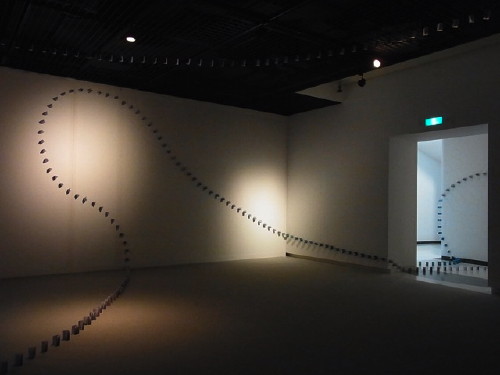perspectives.
|
It is no other than movement in space, over time, that allows a change in perspective.
From one point in space, at one point of time, you can see a smoothly curved line. You have the option to believe that that’s the only reality: that the line you’re looking at is smoothly curved.
|

|
|
You can then decide whether to stop there and nest forever there – in the understanding that the line you’re looking at is smoothly curved. But you can also decide to move a little bit to your left. And when you’ve done this, you’ll see how your whole perspective would change: from your new point in space, at that point in time, the line might not be smoothly curved anymore. It might be a little bit crooked.
|

|
|
Who knows what it might transform into when you move even more to your left. You might dislike this change of perspective, though, and fear not: you always have the option to stay sedentary. Fate is almost entirely your decision after all. But even our bulky continents are moving as we speak, and as Bucky Fuller once said, the earth is a giant spaceship. We are perpetually moving, in space, over time. Everything in us is perpetually moving, in minuscule space, over minuscule time. But then again, we can still always opt not to see. We can still always opt not to imagine. Try this: at this point of slow time, it can appear that although we agree that we are constantly moving, we have only been moving along the same route over and over for thousands of years. Without the appropriate imagination, the change of perspectives we experience could become another constant cliché. A change of perspectives on time, however, is possible, and necessary. Take one small step back at a time. Maybe that’s why I love timelapse.
|
| Images are installation details of Lure (Tintin Wulia 2009) at Hiroshima City Museum of Contemporary Art. Images courtesy of Naoko Sumi. |
